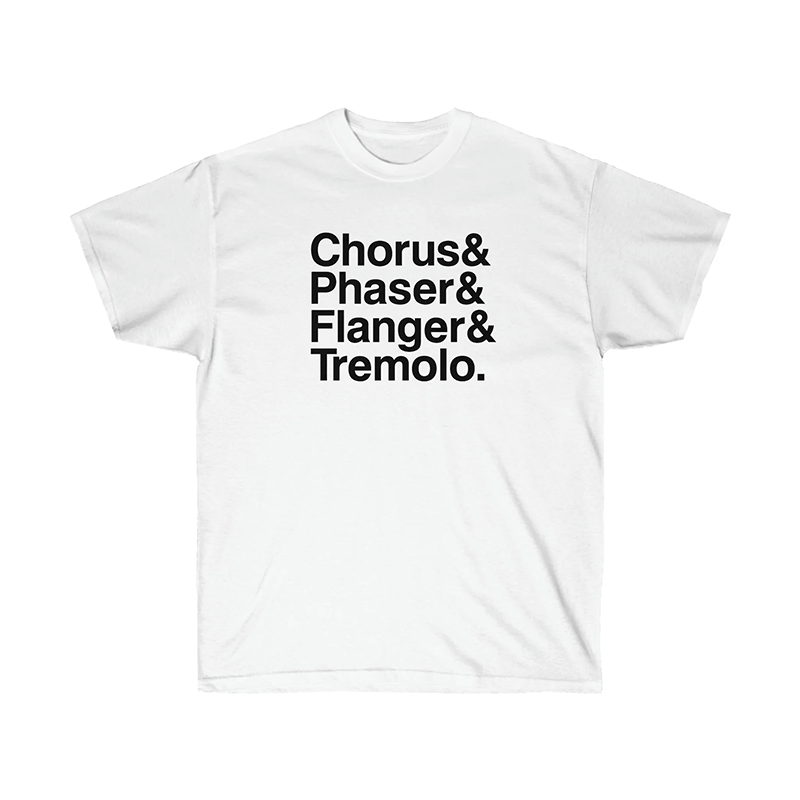(This article comes from our friends at GuitarTricks.com – check out their site for tons of guitar-related tips and tricks!!)
Guitar Tricks presents Delay Pedals Do’s and Don’ts
By Shawn Leonhardt for Guitar Tricks and 30 Day Singer, the original platform for online guitar lessons.
One of the best ways to add depth and space to your guitar signal is by using delay effects pedals. In fact they work great for any instrument like keys, synth, bass, and vocals, it’s all about how you use the signal. It might not be something that early guitarists need to have under their belt, but building your sound is an important aspect of learning how to play guitar. When dealing with time-based effects we must pay close attention to what we play, as it will soon be repeated! Here are some tips and techniques and do’s and don’ts on how to use delay pedals.
Time-Based Effects
Many years ago we recorded our music onto reel-to-reel tape machines, and soon discovered that if you double or reroute it through a mixer, an echo effect occurred. Rock music especially took advantage of this delay with slapback reverb used on the vocals and music of Elvis Presley and Buddy Holly.
Before tape machines we were reliant on mechanical or natural forms of reverb and echo, we would have to play in spaces that gave us these sound qualities. But tape machine loops suddenly made it easier to control these delays, reverbs, and echo’s from within the studio. As time passed we used solid state and digital technology to copy these forms of analog delay. While analog delay is known for having a rich sound, digital delay provides far more sound sculpting options.
Controlling Delay Pedals
The complexity of your delay pedal will depend on the budget you have and model you buy. The digital delay effect works by mixing an input signal that is dry with a processed signal (wet), the amount we mix them together will determine the final sound. A short time change gives us reverb, a longer one delay, and even more signal mixing we can get a long echo.
The various knobs and controllers will sometimes have different names but some have similar effects. Some higher budget controllers will have tone controls for highs, lows, and cutoffs, these help shape the timbre and tone. The feedback, delay, intensity, stutter, and time rates will help control how much of a delay is occurring. One important “don’t” for delay pedals is starting with these knobs all the way up! Harsh loops and feedback can occur so start with your controls turned down.
Other controls can be FX levels, mix, speed, grit, depth, filter, and even wow and flutter which is a rapid variation of the signal copied from old tape machines. These controls will help you mix the signals of wet and dry. One of the most important steps is learning to use your particular delay pedal, practice with your unit and see how the note delays can be altered.
Where to Place Delay Pedals
There are no specific rules on where the pedals go, it is all up to you on the final sound you are aiming for. But when you have a delay or time change in your notes you want to watch where you are placing the sound. Your distortion, overdrive, and compressors come before the delays, and it also helps to have the volume before too, especially if you want to create a swell. That way as you increase the volume it doesn’t start at a weird time during the delay.
If you can plug the delay pedal directly into the FX section of an amp, that will work for adding any delays in that scenario. If you start adding more than one delay pedal you will want to be more careful in your settings as the more you have going in signal changes the more convoluted things can get. One reason delay is so common in shoegaze, ambient, and certain electronic styles is that simpler beats work best with delay.
More Tips on Using Delay Pedals
Here are a few more tips on getting the most out of delay pedals and time-based loop effects:
- A short delay with no feedback and the mix set to low is a great way to just add depth to your song. Keep the repeating on as low as possible to add just the tiniest amount of depth, reverb, and space.
- The tempo you set the delay and play at must fit, some pedals have tap tempo which is helpful. If you are mixing other time-based effects in, make sure they are at the same speed, rate, tempo, or note length. From there you can start experimenting.
- Keep your intervals simple when playing, perfect 1 st , 4 th , and 5 th note movements sound the most pleasant at first. Next work on simple minor changes, do not play too fast, as the wrong intervals and notes will not sound good being repeated!
- If you want a heavier swell you can turn the repeat or speed of the loop up that way it appears to grow more as it swells.
- The kind of delay you use can be genre defining! U2’s The Edge is known for his dotted 1/8 note rhythms, while progressive rockers like David Gilmour often use longer delays for ambient effects, and alternative rockers like Radiohead use high rates for screeching sounds.
- Using specific note rhythms can help you play in styles that may be too difficult under normal circumstances. Set the note length, play simple riffs, and notice how your guitar playing sounds a lot more complicated!
- It helps to have two different delays on your board, one set to a long delay and the other to short. Especially if one is a more vintage style pedal and another a modern multi-knob pedal for more tone and signal changing options.
- You can use a reverse delay after a regular delay pedal to cut back on the note attack and create a shimmering ambient sound. Mixing delays and increasing feedback (carefully) is a great way to explore longer delay textures.
- If you get enough of a delay you will have a full blown looper! Of course the more looping abilities you have, the more you can add layers and different parts to what you are playing! Just make sure the notes played in each layer fit together.
- Practice ahead of time, real time delay pedal experimentation can be problematic. If you are going to improvise make sure you are familiar with the pedal inside and out!
Save for a few safety precautions there are no hard and fast rules to using a delay pedal. In some cases you may want to break the normal uses of the pedal to create a new effect or song. But in the long run knowing how to use your delay pedal properly will be the best way to get the most out of it. Pay attention to the new sounds with each turn of the knob and see what new melodies, riffs, and rhythms you can create!
_________
Affiliate Links:
Sweetwater – https://sweetwater.sjv.io/MX05KP
StewMac – https://stewmac.sjv.io/P0X7BQ
Perfect Circuit – https://bit.ly/3pHpS6P
Amazon – https://amzn.to/3FN04Mq
GET EXCLUSIVE UPDATES, CONTEST INFO, SEE OUR LATEST DEMO VIDEOS AND MORE:

















